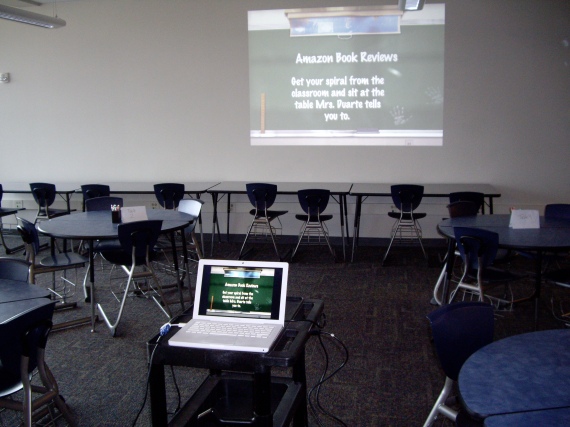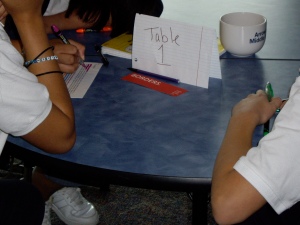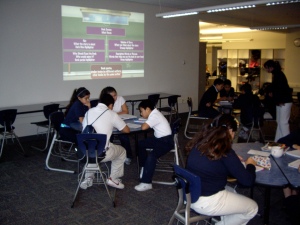Amazon Book Reviews – Rubric Creation
Before my students started writing their own book reviews, I wanted to make sure that they knew the target that they needed to aim for – that is what I call a rubric. We used the same four sections from the book review highlight activity: who should read this book?, descriptive words, plot, and opinions. We added three optional categories: characters, genre, and rating. After we had each of the topics that they needed to include, we started filling out a rubric together on the overhead. Since we had created a booktalk rubric together earlier in the year and they had been assessed on the rubric, they were familiar with the possible scores they could receive in each area: advanced, proficient, partially proficient, unsatisfactory, or no attempt. We usually fill out the advanced first, then work our way down the scale. We listen to everyone’s ideas and come to a consensus. After we create the rough draft, I type up the information, create an overhead and have my classes review the information. I want to make sure that they agree to everything on the rubric, because that is what they are going to be required to do.
Each of the rubrics look a little different, based on the decisions of each class. Here is an example that my class came up with:
So, after the creation of the rubric, it was time for them to write their own book review…to be continued.



